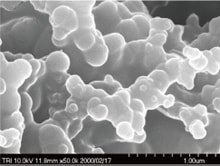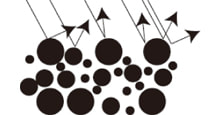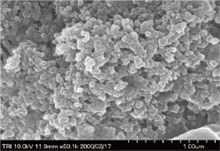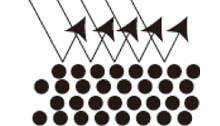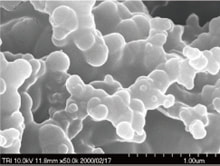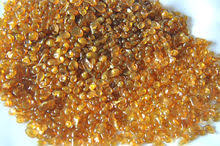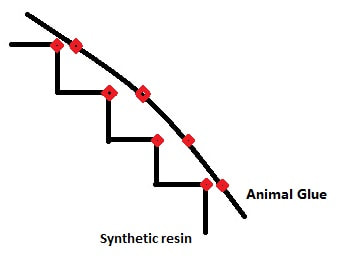
Where are you?
We are in Virginia Beach, Virginia, USA. Besides local businesses, we offer fast and free shipping to mainland USA from Virginia for all art supplies. Europe, Oceania, and Canada customers are welcome to contact us for "Free shipping from China". However, we do global shipping from USA at lower rate than official quotes.
Tel : (757)-986-0022
Redmill, Virginia Beach, Va
We are in Virginia Beach, Virginia, USA. Besides local businesses, we offer fast and free shipping to mainland USA from Virginia for all art supplies. Europe, Oceania, and Canada customers are welcome to contact us for "Free shipping from China". However, we do global shipping from USA at lower rate than official quotes.
Tel : (757)-986-0022
Redmill, Virginia Beach, Va
Are Raw Papers are Really Raw? Many Sumi e teachers even do not know.
Discount for local artists purchase in person?
We offer customers buying in person at significant discount prices (Local Discount Program for Buying in Person) whatever local or trip to local. We encourage new local customers contact us and show artworks, so we can prepare product testing samples to try exactly fit to needs, thus enhance your shopping experience. Local Discount program of Buying in Person do not combine with online rewards program. More Details
More Q&A, please click each question
How to protect a Chinese Brush
Mulberry paper, Tapa (paper) mulberry paper and Ma paper
Some Misunderstanding with the Sumi e Brush
Watch out the toxic Yixing clay teapots in the market
How to prepare the ink pad for seals
Are Raw Papers are Really Raw? Many Sumi e teachers even do not know.
Fast Easy Traditional Mounting Glue Recipe
Discount for local artists purchase in person?
We offer customers buying in person at significant discount prices (Local Discount Program for Buying in Person) whatever local or trip to local. We encourage new local customers contact us and show artworks, so we can prepare product testing samples to try exactly fit to needs, thus enhance your shopping experience. Local Discount program of Buying in Person do not combine with online rewards program. More Details
More Q&A, please click each question
How to protect a Chinese Brush
Mulberry paper, Tapa (paper) mulberry paper and Ma paper
Some Misunderstanding with the Sumi e Brush
Watch out the toxic Yixing clay teapots in the market
How to prepare the ink pad for seals
Are Raw Papers are Really Raw? Many Sumi e teachers even do not know.
Fast Easy Traditional Mounting Glue Recipe
Ink: 1-2-3
Sumi e ink is traditionally composed of pine or oil soot, natural glue, Chinese medicine and spices. Graphite and other carbon-related natural materials were popular during early periods, until they were substituted with pine or oil soot.
Pine Soot ink VS Oil Soot ink
The black ash solidified after the pine is burned is the raw material for the pine soot ink. Correspondingly, oil soot results from burning many kinds of vegetable oils or lard.
Sumi e ink is traditionally composed of pine or oil soot, natural glue, Chinese medicine and spices. Graphite and other carbon-related natural materials were popular during early periods, until they were substituted with pine or oil soot.
Pine Soot ink VS Oil Soot ink
The black ash solidified after the pine is burned is the raw material for the pine soot ink. Correspondingly, oil soot results from burning many kinds of vegetable oils or lard.
Pine soot particles (shown above by microscope) have diameters of 20 to 300 nm. The particle sizes are mixed randomly causing irregular reflection which produce the black with absorbent thickness with a single light source, as shown above.
Oil soot particles (shown above by microscope) have diameters of 15 to 50 nm. The particle sizes are relatively homogeneous, causing regular reflections which produce a glossy black with a single light source, as shown above.
This explains why pine soot ink is darker than oil soot ink, and why oil soot ink is more gloss than pine soot ink. Pine soot ink is usually used for calligraphy; as well as landscape painting, especially for smoky clouds and mist. Oil soot ink is usually used for calligraphy; as well as flower and bird painting.
In the 1970’s, machine burned soot was adopted in ink making. The particles of machine burned soot are much larger than those of hand burned soot, and machine burned soot particles are also more unevenly distributed, as shown in the following picture.
This explains why pine soot ink is darker than oil soot ink, and why oil soot ink is more gloss than pine soot ink. Pine soot ink is usually used for calligraphy; as well as landscape painting, especially for smoky clouds and mist. Oil soot ink is usually used for calligraphy; as well as flower and bird painting.
In the 1970’s, machine burned soot was adopted in ink making. The particles of machine burned soot are much larger than those of hand burned soot, and machine burned soot particles are also more unevenly distributed, as shown in the following picture.
When painting, this results in layers of ink color that are inferior. For this reason, ink sticks over forty-fifty years old (made before 1970’s) are significantly more expensive. These pictures are from research by Boku Undo Co. LTD of Japan (墨运堂).
Glue
The quality of glue used in ink is very important. Animal glue is traditionally used and is the standard and the core when making Sumi ink and mineral colors. Good factories usually use glue from ox skin for ink sticks and solid mineral color cubes, and from ox bone for liquid ink or semi-solid color products.
Glue
The quality of glue used in ink is very important. Animal glue is traditionally used and is the standard and the core when making Sumi ink and mineral colors. Good factories usually use glue from ox skin for ink sticks and solid mineral color cubes, and from ox bone for liquid ink or semi-solid color products.
There are three main functions of glue in the ink and colors:
When relatively strong glue is used, soot particles hold together more tightly, so that finer soot particles are produced when grinding the ink stick. Years ago, there was an unfavorable trend of using very weak glue for ink, especially in Japanese products. The most obvious sign was ink sticks that would break after only a few years. Additionally, the black would drop off slightly after the paper dried. On the other hand, if glue is too strong, that causes problems too. The correct portions of good quality materials and a proper production process are the keys to good quality ink.
To demonstrate why animal glue is the standard and core of Sumi ink and colors, we must emphasize some essentials of Sumi art. For example, by controlling water and ink, ink can be divided into the full spectrum of ink colors: dry, wet, thick, light and coke (the blackest). And to break ink, such as when “light ink breaks dark” or “dark ink breaks light”, ink must cover all linear changes of the dryness, wetness, thickness and lightness. Moreover, washing and shading require a full tonal gradient from clear to opaque black when diluting ink with water.
Animal glues, when diluted, demonstrate a smooth progression of change in ink colors, rather than the step-wise change produced by synthetic resin or industrial glue, as shown below. Diluting synthetic resin or industrial glue cannot produce a full graduate distribution. For this reason, animal glues are far superior to synthetic resins or industrial glues for presenting the essential qualities of Sumi e art
- Adhesion. Because the molecule weight of soot particles is heavier than that of water, the free amino and carboxyl groups in the glue react with the hydroxyl and carboxyl groups on the surface of carbon black to connect each other and disperse evenly in water for a long time. With the help of glue, different results between thick and light ink can be presented.
- Lubrication. It can reduce the friction among particles of soot, brush and rice paper.
- Gloss and transparency. Glue can better create ink layers and glossy on rice paper.
When relatively strong glue is used, soot particles hold together more tightly, so that finer soot particles are produced when grinding the ink stick. Years ago, there was an unfavorable trend of using very weak glue for ink, especially in Japanese products. The most obvious sign was ink sticks that would break after only a few years. Additionally, the black would drop off slightly after the paper dried. On the other hand, if glue is too strong, that causes problems too. The correct portions of good quality materials and a proper production process are the keys to good quality ink.
To demonstrate why animal glue is the standard and core of Sumi ink and colors, we must emphasize some essentials of Sumi art. For example, by controlling water and ink, ink can be divided into the full spectrum of ink colors: dry, wet, thick, light and coke (the blackest). And to break ink, such as when “light ink breaks dark” or “dark ink breaks light”, ink must cover all linear changes of the dryness, wetness, thickness and lightness. Moreover, washing and shading require a full tonal gradient from clear to opaque black when diluting ink with water.
Animal glues, when diluted, demonstrate a smooth progression of change in ink colors, rather than the step-wise change produced by synthetic resin or industrial glue, as shown below. Diluting synthetic resin or industrial glue cannot produce a full graduate distribution. For this reason, animal glues are far superior to synthetic resins or industrial glues for presenting the essential qualities of Sumi e art
Despite this, many kinds of ink using industrial glue or synthetic resin are widely sold in the United States due to their relatively low prices. In some cases, they are sold at high prices anyway, which confuses consumers who end up paying for quality they don't get.
Chinese Medicine and Spices
Some Chinese medicine and spices help ink soot penetrate rice paper, enhancing color and gloss, and producing an enjoyable aroma.
In Conclusion
The situation in the current US market is not good, and even worse than that in China. It is full of fake and low quality products. Only a few sellers carry good Chinese liquid inks, such as the middle to upper level quality of YiDeGe (一得阁). No sellers carry good Japanese liquid inks, such as 玄宗 by Buku Undo (墨运堂) .
For instance, one of the cheapest fake YiDeGe inks in the current Chinese market is selling in Hampton Roads area stores. The top one online retail platform had even marked it as a featured product, and many national online sellers carry it at a high mark-up. It is not a kind of YiDeGe ink, but a totally fake one as the following picture shown.
Chinese Medicine and Spices
Some Chinese medicine and spices help ink soot penetrate rice paper, enhancing color and gloss, and producing an enjoyable aroma.
In Conclusion
The situation in the current US market is not good, and even worse than that in China. It is full of fake and low quality products. Only a few sellers carry good Chinese liquid inks, such as the middle to upper level quality of YiDeGe (一得阁). No sellers carry good Japanese liquid inks, such as 玄宗 by Buku Undo (墨运堂) .
For instance, one of the cheapest fake YiDeGe inks in the current Chinese market is selling in Hampton Roads area stores. The top one online retail platform had even marked it as a featured product, and many national online sellers carry it at a high mark-up. It is not a kind of YiDeGe ink, but a totally fake one as the following picture shown.
A more detailed discussion of quality of ink sticks will be another topic. I do appreciate about any feedback on this paper, in person or via [email protected]. Any feedback will be the basis for further modification.
